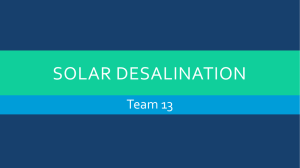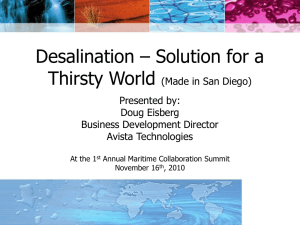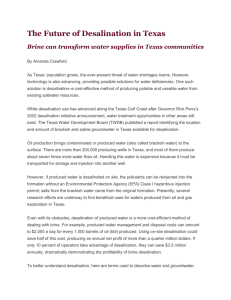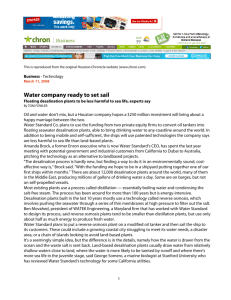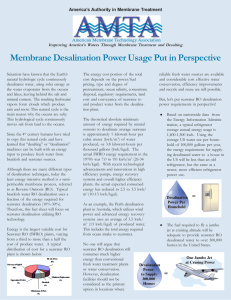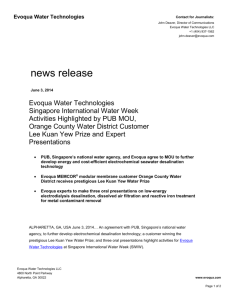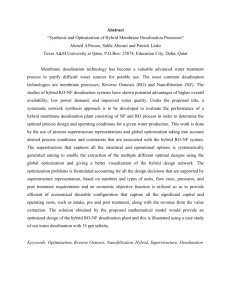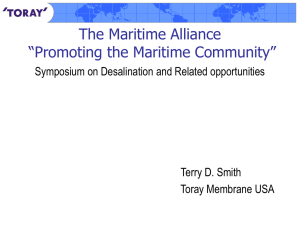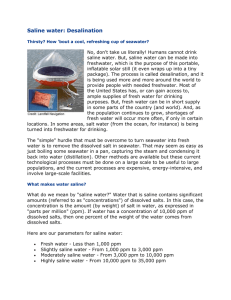Desalination - Florida Section of the American Water Works
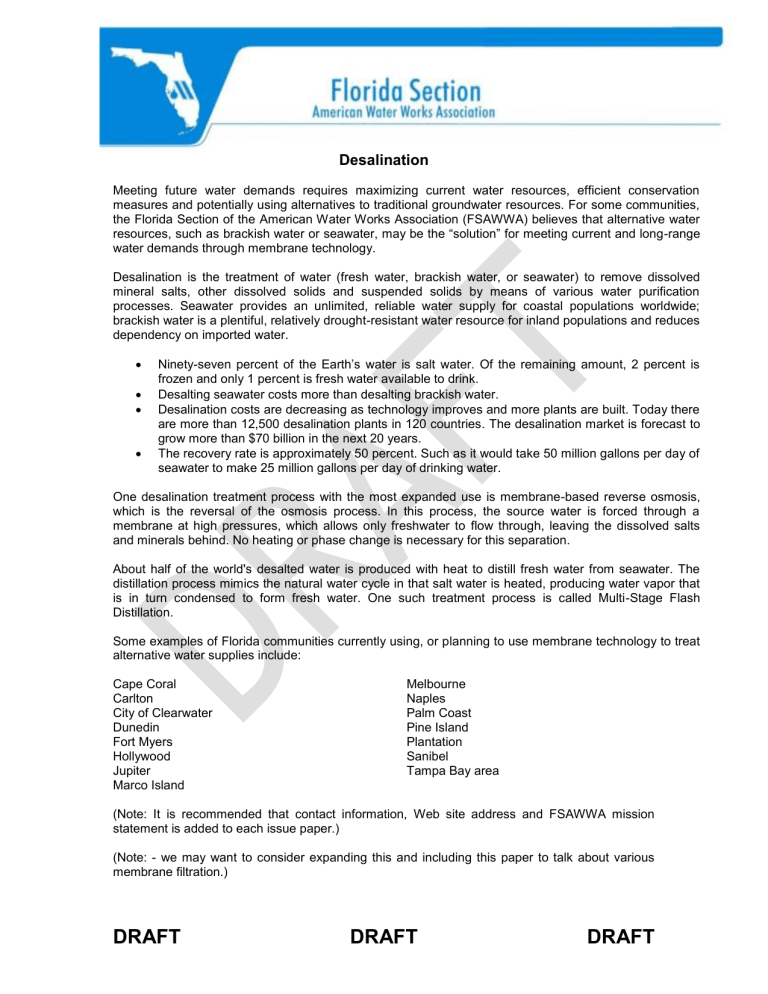
DRAFT
Desalination
Meeting future water demands requires maximizing current water resources, efficient conservation measures and potentially using alternatives to traditional groundwater resources. For some communities, the Florida Section of the American Water Works Association (FSAWWA) believes that alternative water resources, such as brackish water or seawater, may be the “solution” for meeting current and long-range water demands through membrane technology.
Desalination is the treatment of water (fresh water, brackish water, or seawater) to remove dissolved mineral salts, other dissolved solids and suspended solids by means of various water purification processes. Seawater provides an unlimited, reliable water supply for coastal populations worldwide; brackish water is a plentiful, relatively drought-resistant water resource for inland populations and reduces dependency on imported water.
Ninetyseven percent of the Earth’s water is salt water. Of the remaining amount, 2 percent is frozen and only 1 percent is fresh water available to drink.
Desalting seawater costs more than desalting brackish water.
Desalination costs are decreasing as technology improves and more plants are built. Today there are more than 12,500 desalination plants in 120 countries. The desalination market is forecast to grow more than $70 billion in the next 20 years.
The recovery rate is approximately 50 percent. Such as it would take 50 million gallons per day of seawater to make 25 million gallons per day of drinking water.
One desalination treatment process with the most expanded use is membrane-based reverse osmosis, which is the reversal of the osmosis process. In this process, the source water is forced through a membrane at high pressures, which allows only freshwater to flow through, leaving the dissolved salts and minerals behind. No heating or phase change is necessary for this separation.
About half of the world's desalted water is produced with heat to distill fresh water from seawater. The distillation process mimics the natural water cycle in that salt water is heated, producing water vapor that is in turn condensed to form fresh water. One such treatment process is called Multi-Stage Flash
Distillation.
Some examples of Florida communities currently using, or planning to use membrane technology to treat alternative water supplies include:
Cape Coral
Carlton
City of Clearwater
Melbourne
Naples
Palm Coast
Dunedin
Fort Myers
Hollywood
Jupiter
Pine Island
Plantation
Sanibel
Tampa Bay area
Marco Island
(Note: It is recommended that contact information, Web site address and FSAWWA mission statement is added to each issue paper.)
(Note: - we may want to consider expanding this and including this paper to talk about various membrane filtration.)
DRAFT DRAFT DRAFT

